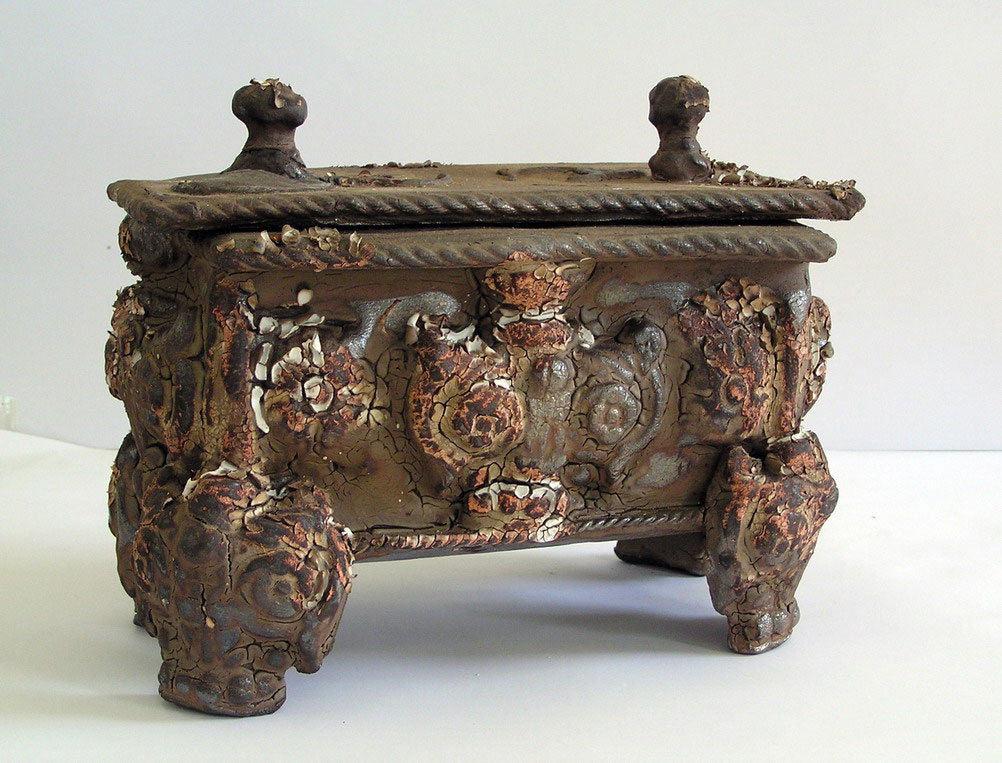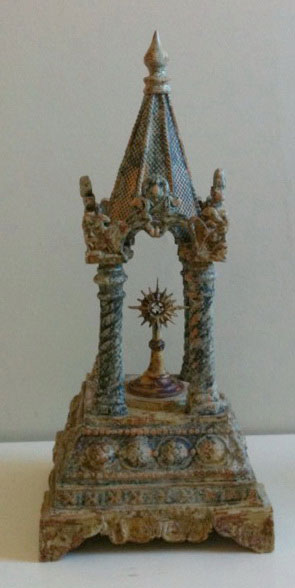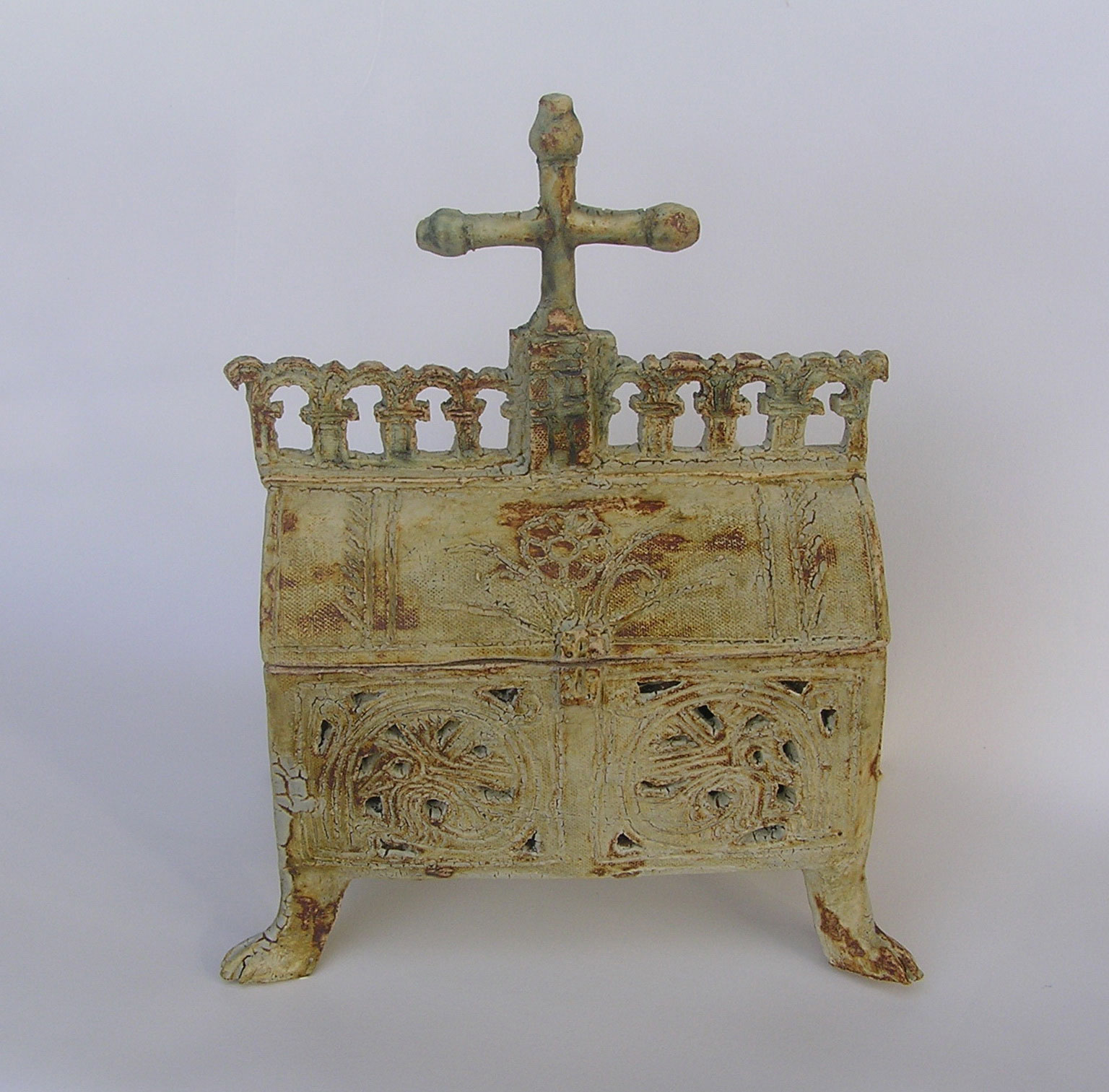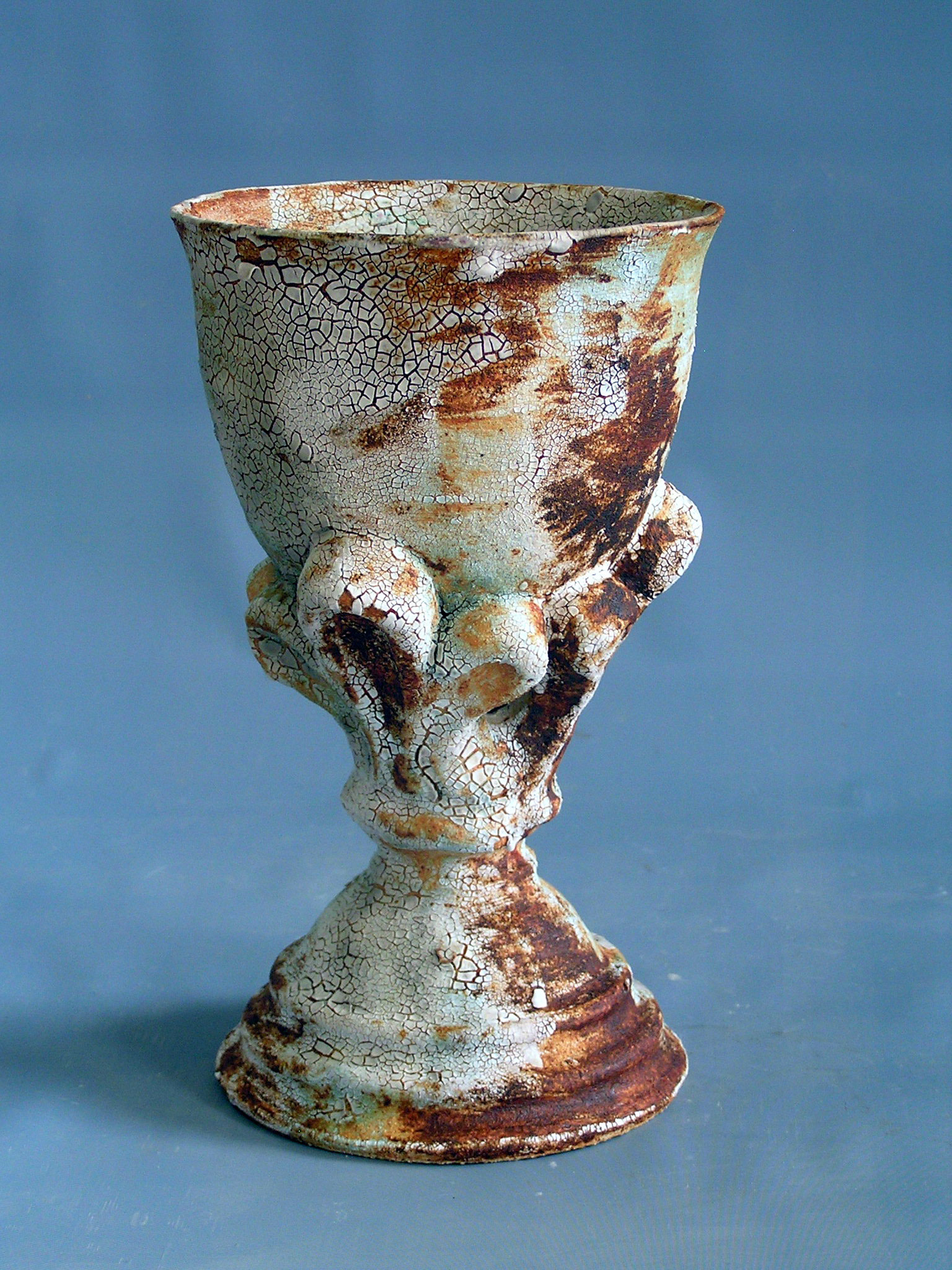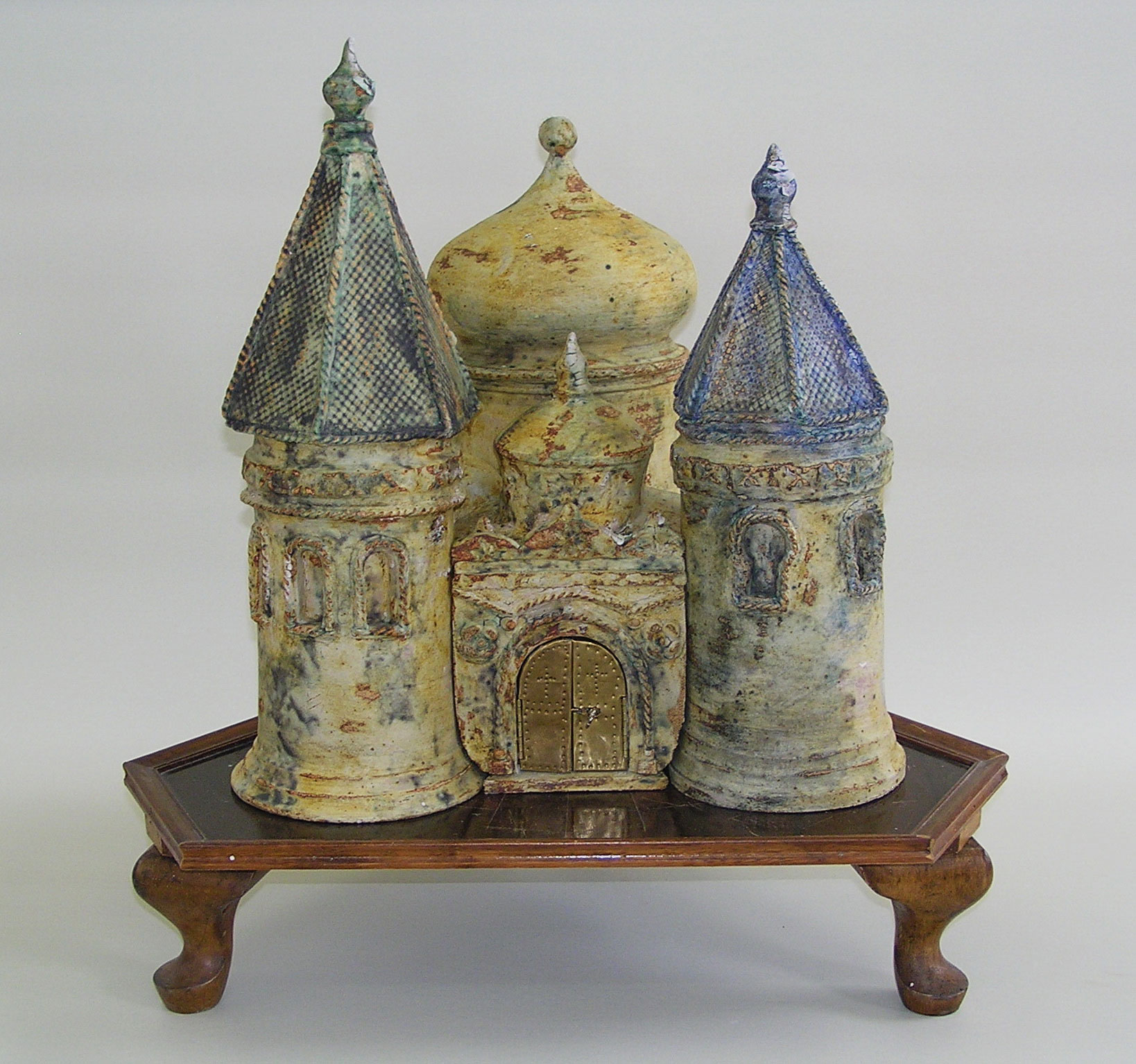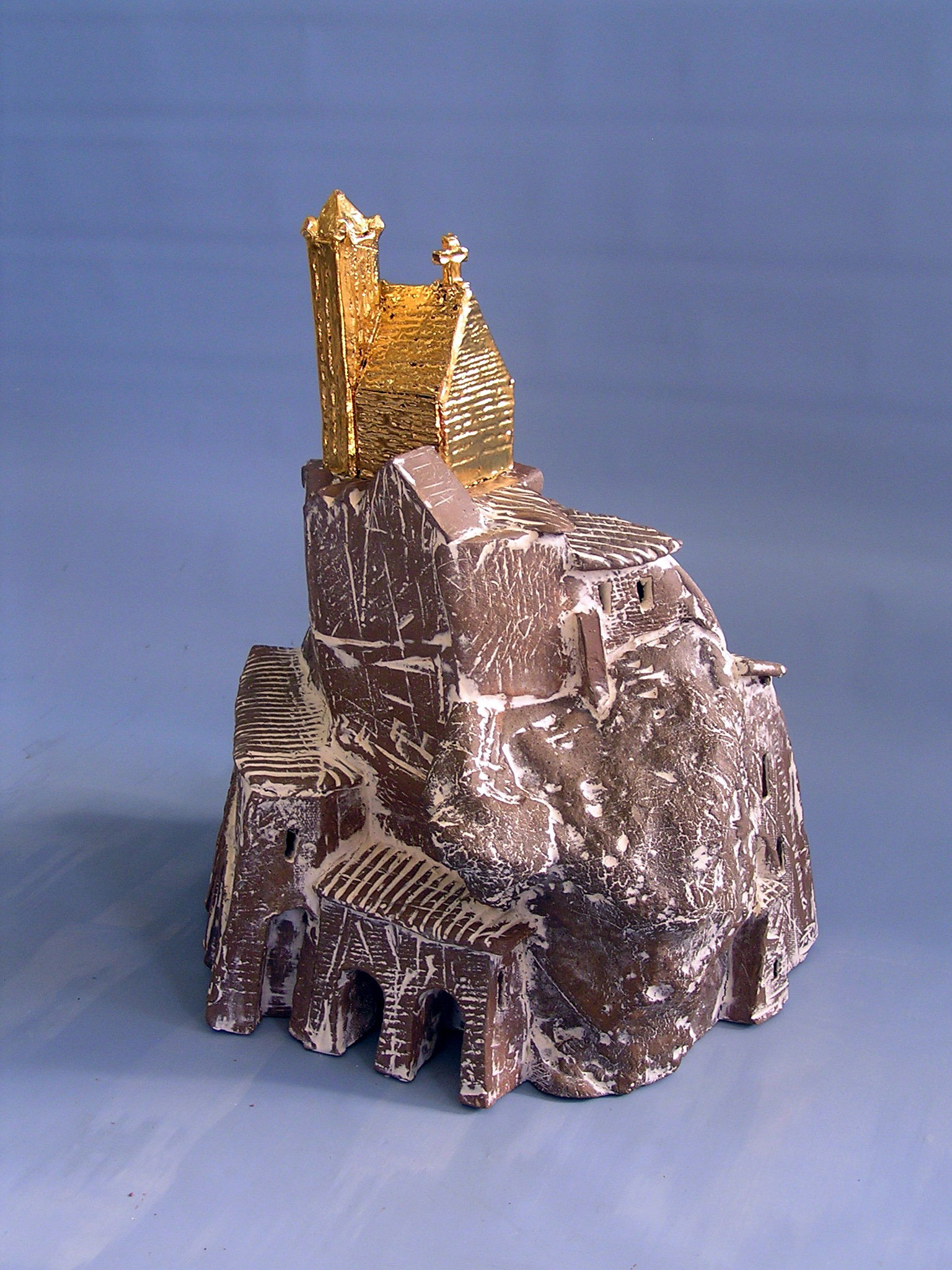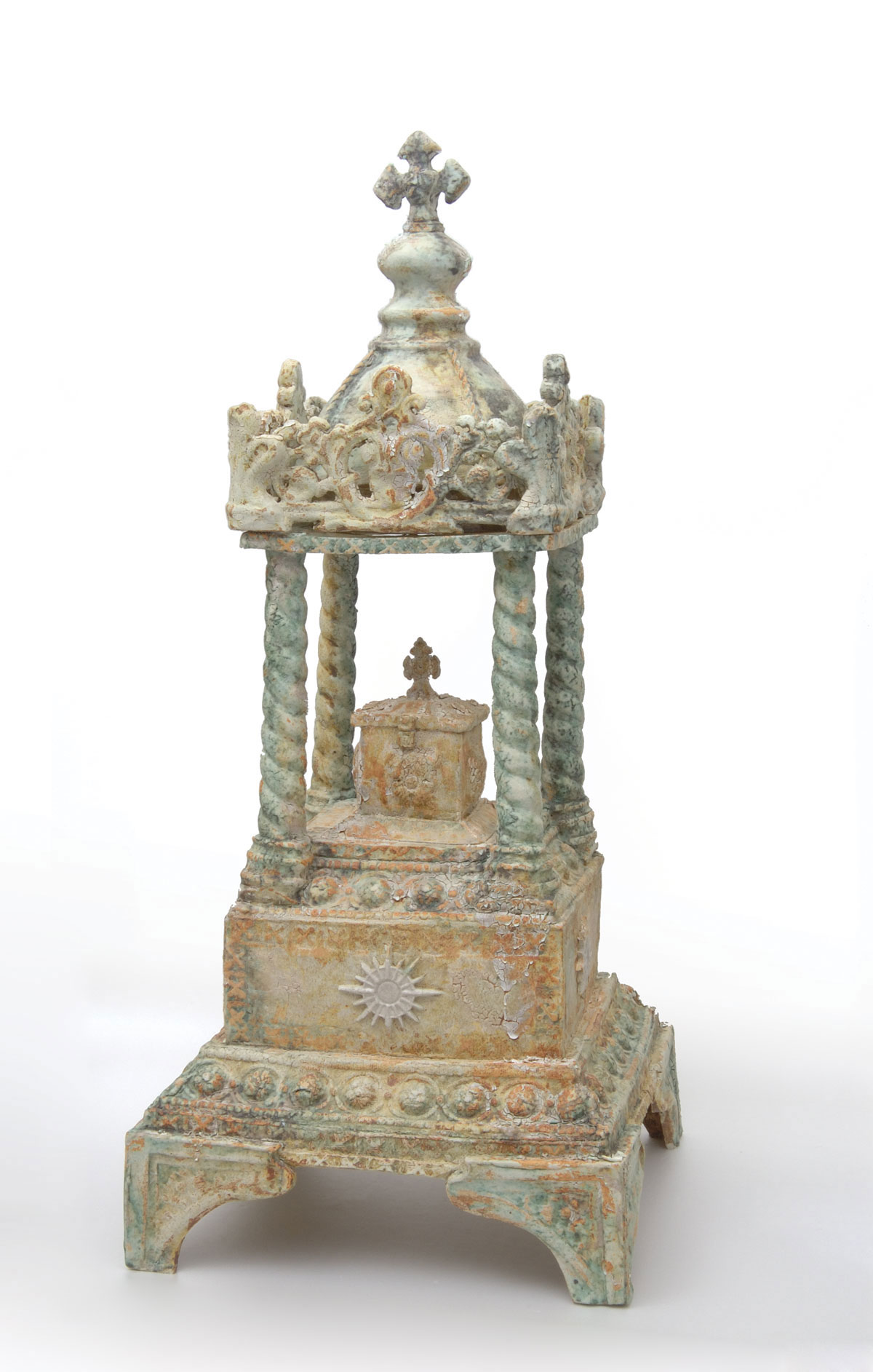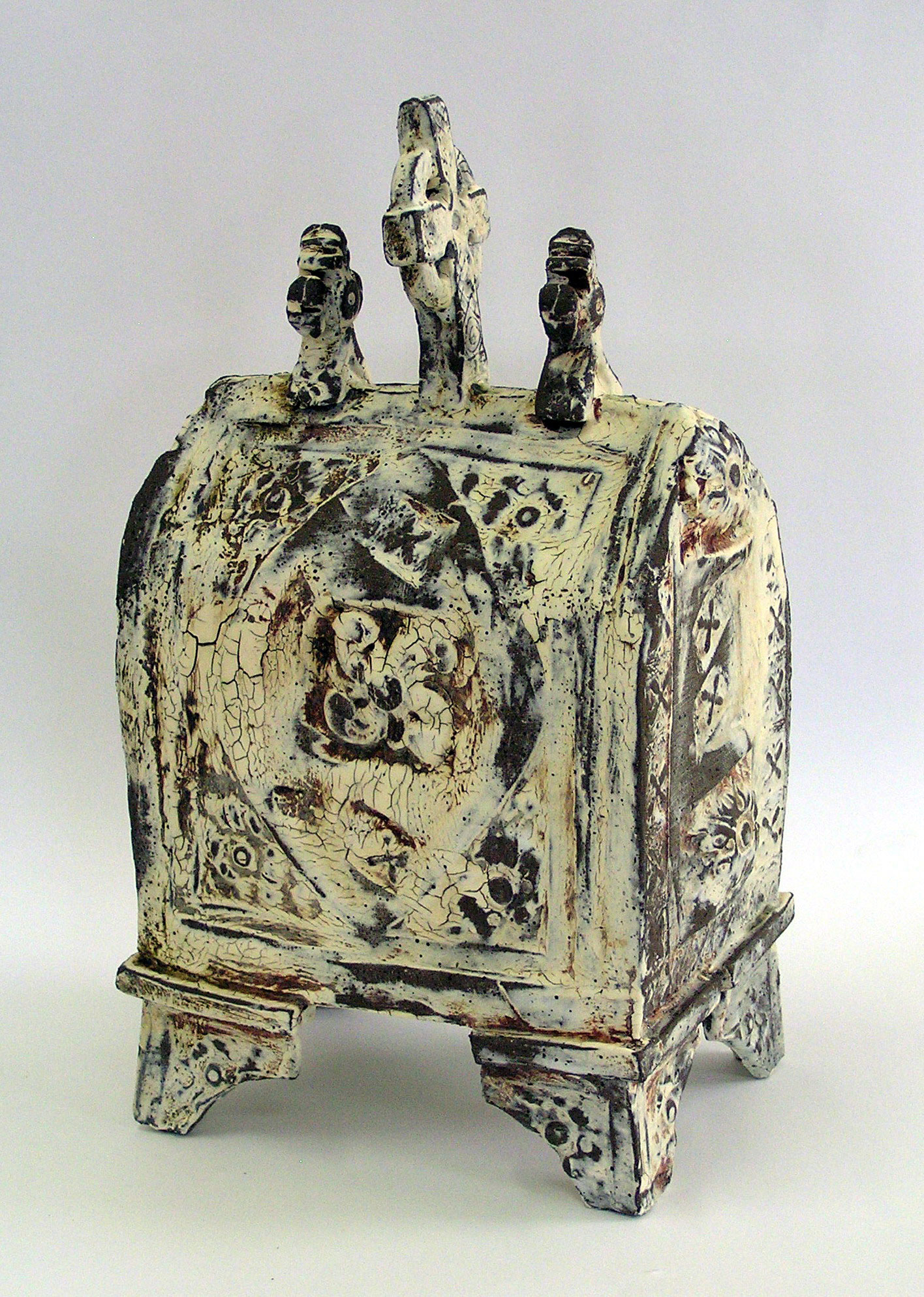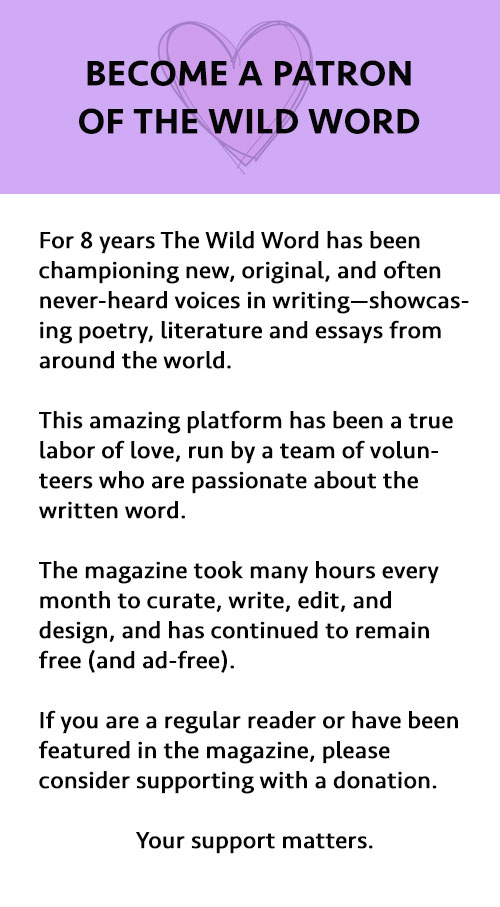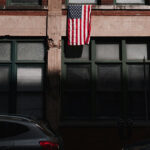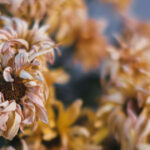ARTIST-IN-RESIDENCE
★ ★ ★ ★
JOHN O’LOUGHLIN
We love artists at The Wild Word.
Our Artist-in-Residence page provides a space for artists to showcase their work and to spread their creative wings. In their month of residency, invited artists are encouraged to collaborate with other contributors within the magazine, to experiment and develop new projects, while giving us an insight into their creative process.
Our Revolution issue Artist-in-Residence is ceramic artist John O’Loughlin.

John O’Loughlin is an Australian artist. After retiring in 2001, he went to art college and studied and now specialises in ceramic art. He is married with three children. His other loves are art, travel, and the Italian language.
THE STORY OF THE BURNT POT
Sue’s friend telephoned her on a hot windy day last December to tell her ‘Sue, you have to get out of your house and head for a safer zone. There’s a bushfire raging in your area!’ Sue was inside her house at the time, no radio switched on and oblivious to what was happening outside. She left straight away. A half hour later her house was gone. Totally burnt to the ground by the bushfire, along with a number of others in the village. Sue told me that only one item remained intact in the burnt-out house: one of my pots that she bought from the Ballarat Art Gallery. Everything else that she owned was gone, burnt to ash.
You can only imagine the distress of Sue and her family at losing everything, but she is back at work and getting on with life. Today I was privileged to see the one remaining piece of her household goods, the pot. The bushfire was so sudden and so hot that it burnt away at the surface decoration of the pot. As the fire consumed all of the oxygen in the air it created the perfect ‘reduction atmosphere’ in the house (now a kiln), and it turned the copper oxide on the clay to red.
The little pot has a grey and reddish finish with some carbon blackening. It speaks to me now so much more than it did originally. Nature has applied it’s own finish to the piece, in a violent and vicious attack that destroyed everything but the piece of stone previously moulded by fire. The pot has been through the fires of hell but is not destroyed. The trauma has rendered it more fragile but now it is admired and wondered at in the regional Art Gallery where Sue works. A true wonder of nature, if we weren’t so mad at nature for her destructive whims.
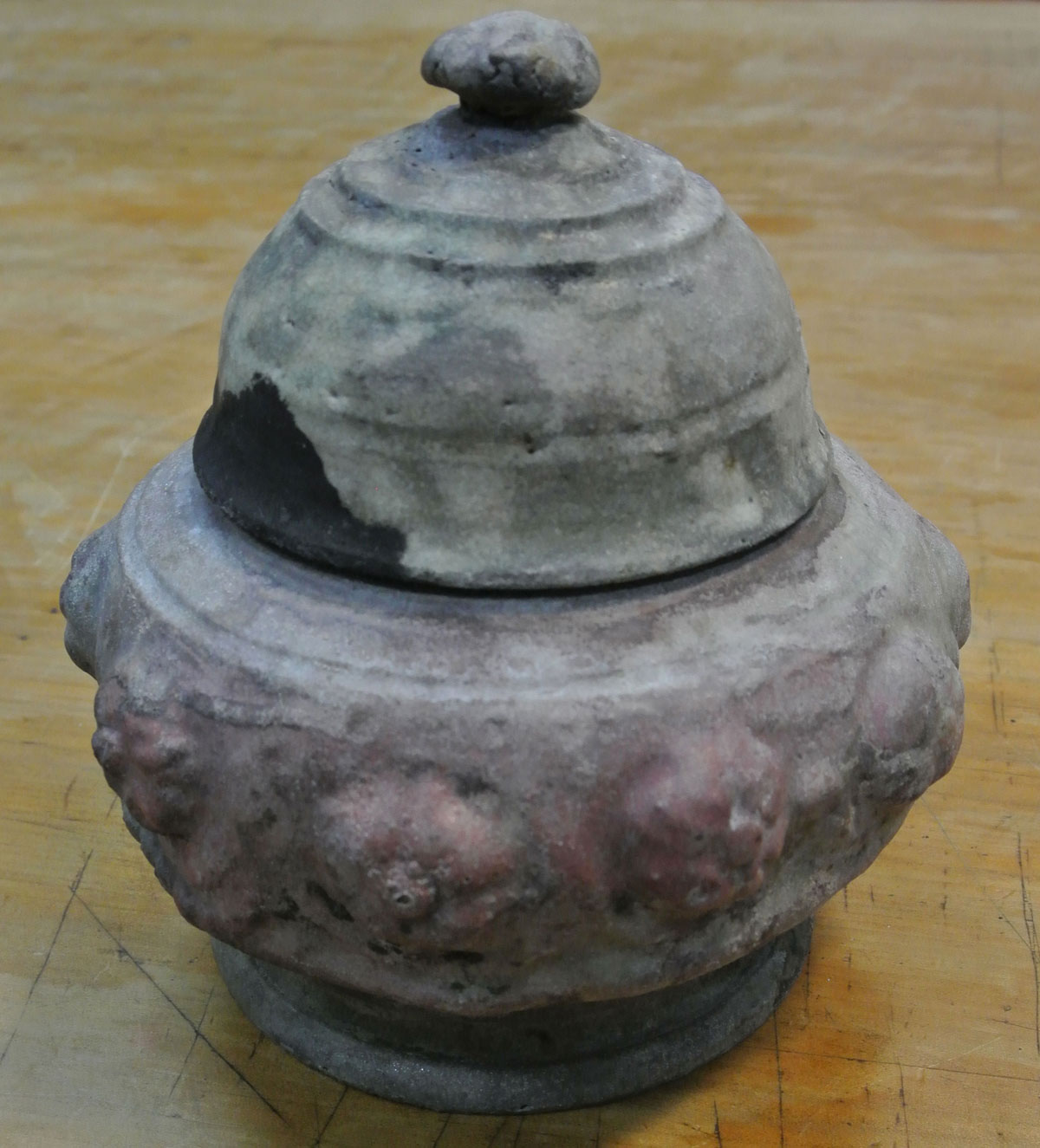
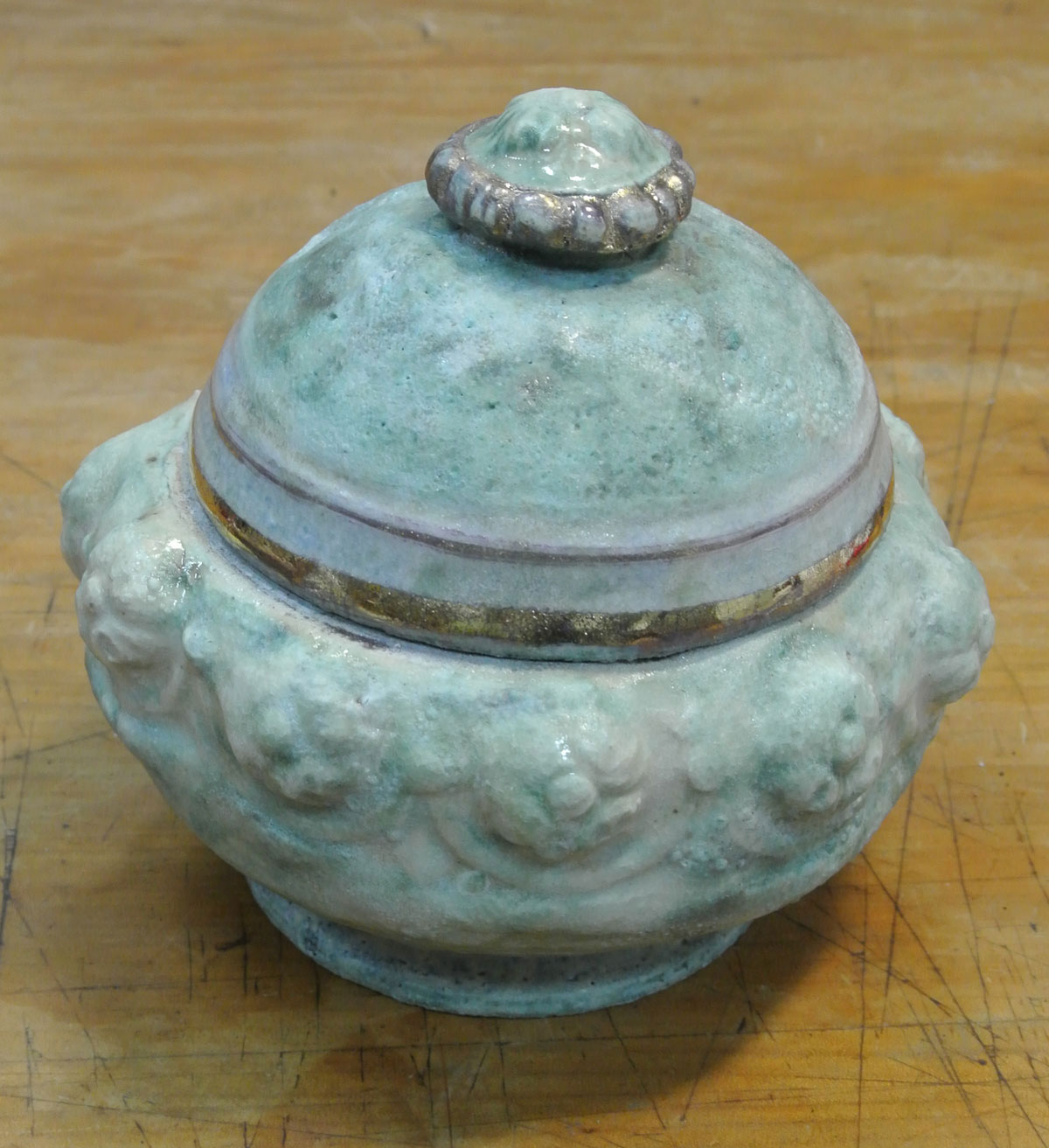
This is a photo of the pot and of its partner, as I made two pieces at the time.
I have given Sue the partner piece.
FIRE
Fire is such a primal thing. I am awestruck when I am firing the kiln, amazed by what is happening inside this big oven, at the dramatic change that is taking place in there. The wood kiln firing is the most dramatic, a long tunnel of a kiln and when the fuel is tossed in the flame roars out of the chimney into the sky. This is dramatic and symbolic, especially when one is doing a night shift as a kiln ‘rat’. I can’t help imagining what is going on inside the fire chamber, with wood ash rising and flowing with the flame, showering and glazing the pots.
The raw clay is fired to 980°C, becoming a soft stone that can be safely worked with to glaze and finish. Stoneware clays will stand being fired to very high temperatures. My work is best fired to 1222°C, or can go to 1310°C. In a wood-fired kiln the temperature can reach 1400°C.
I can hardly bear the three days of cooling time before the wood kiln can be opened, and then the unpacking and looking at all the pieces. They are laid out on the grass in the same position they occupied in the kiln so that the effect of fire and flame can be evaluated. I love the wood fire. I don’t have much access to this kiln so it is very special. The fire is an agent of change. The dull grey clay pot goes into the kiln, but when it comes out it can be a thing of great and unique beauty.
CLAY
I love the clay between my hands, soft but firm as it rises to the touch, blooms outward or inward according to my desires. I enjoy hand-building my “Reliquary” forms from slabs of rolled clay, pressed into one of moulds that I have made. I join the slabs to make sides, bases and lids, embellishing the vessel to give an over-decorated baroque feel to it. I am very content and completely absorbed when I am working in the studio.
Every potter has their own unique decorating style. Mine is to use a combination of engobes, oxides and glazes. Mine use a lot of bone ash to make it crackle and crawl, giving it an ancient feel, like a piece from an archaeological dig. This ancient feel is enhanced by the gas kiln firing process called ‘reduction firing’. This produces the wonderful copper red colours that the ancient Chinese discovered, or soft pinks or greens depending on the fire and heat.
I love the softness of clay, its infinite mouldability, its attention to the softest touch of a shell or a piece of sawn timber or a crease in a mould that leaves the finest of impressions on the surface of the clay. When I impress a thin slab of clay in a mould and lift out the informed piece, a perfect representation of the original, I get excited. I stay excited for the piece until it is through the decorating and firing processes and sits before me as a successful piece of pottery. Then I am satisfied.
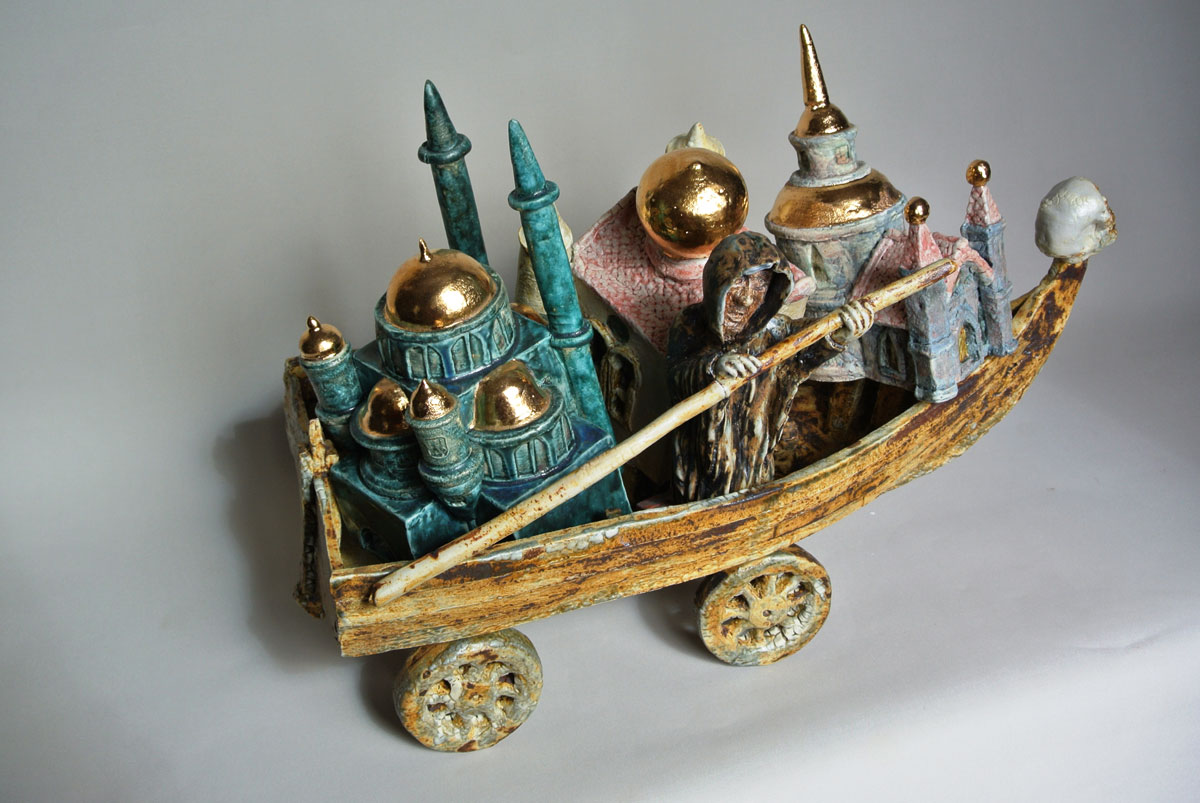
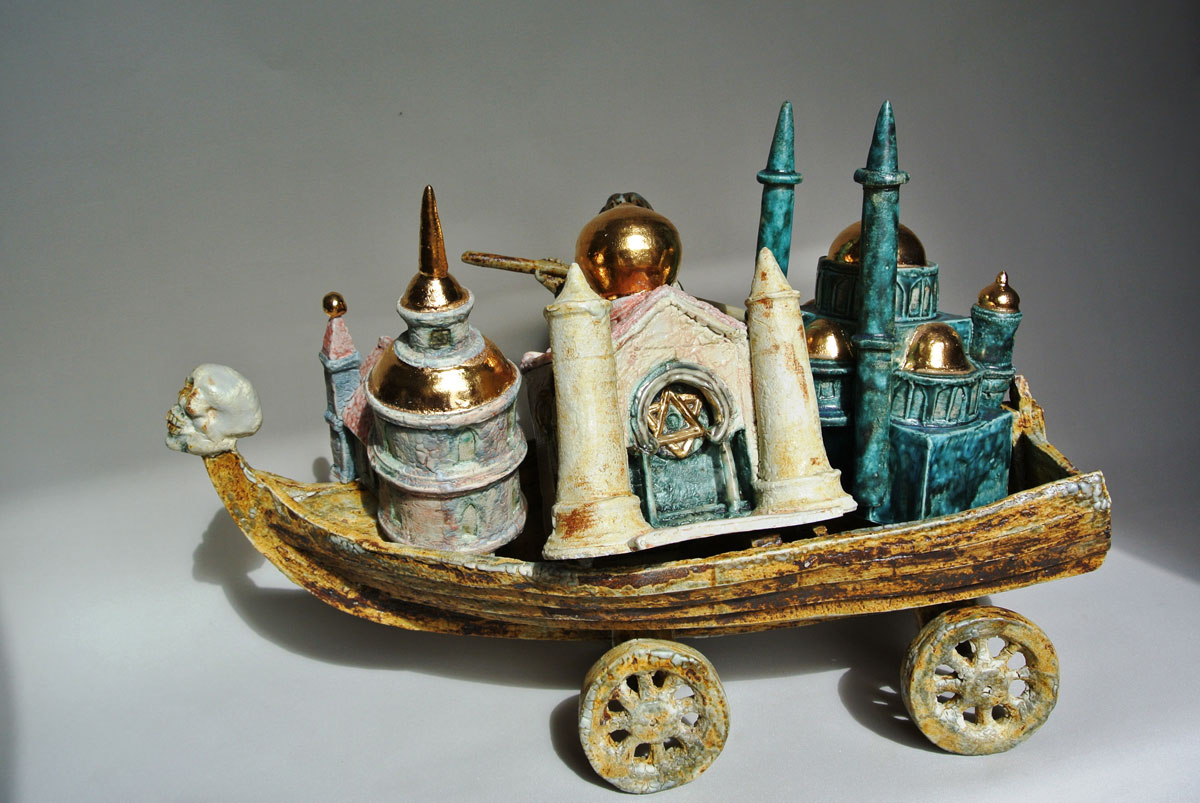
‘Maquette for The Ferryman and the Churches’ 2015, What Makes it Go series.
This work was in my head for many years. This piece is a ‘maquette’ or a trial run, as I wanted to make the work in a fine white Australian porcelain. This is a reference to the Ferryman of the Styx taking souls to hell, which seems to me to be the state of the churches at the moment.
IN CONVERSATION WITH JOHN O’LOUGHLIN
These are the things that kept alive, and developed, my growing passion to become an artist. When we moved to Ballarat I found the people and the infrastructure were ideally suited to inflaming the passion of an aspiring artist, and when the time was right, children finished university, I retired from work and began to study at the university. I was 58 years of age then and I felt very privileged.
It was probably in my fourth year of studies that I felt I had a level of skill that allowed me to think of myself as an ‘artist’, a person making art at a level of quality and excellence in my own and my viewers and critics eyes. I was gaining understanding about the expression of ideas in art making and felt that I was truly ‘making art’.
One of my great interests, as an older student, was observing the young people who came through the studio during their arts degree. Many floundered through, gaining little understanding of their medium and making limited progress over three years. Others appeared inspired by their opportunity and made great work, clearly advancing during the course. The difference seemed to me to be in their self-belief, recognising the value in what they did, not comparing themselves to other students so much as to their own vision of what they wanted to do. My advice to them, and to anyone, is to believe in the value of what you are doing and making, and in the goals that you have set yourself. Many people say to me that they are definitely no good at artwork, they can’t draw to save themselves. These people probably mean that they can’t paint like Van Gogh and so they place themselves outside the art field of interest. I believe that any mark (pen, pencil, stitch, paint, letter) one makes deliberately has its own beauty. It can be added to as art and can be tackled by anyone with a passion.
If you have a creative idea, it is germinating within you and the older you get the more developed is the idea and content. Your current experience is value adding all the time, and when the moment arrives you begin the plan and the work. My fellow students used to say that I was so lucky that I had my religious and life experiences behind me to draw on for ideas. They, in their youth, had not had “any” real experiences to foment their artwork. To me this was an excuse for not grabbing at the thing in their life that stood out as most interesting, believing in it as a subject, and working the idea. Not easy, but doable.
I think emotion has something to do with starting a project as it drives the importance of the idea. If I feel strongly about something I am focused on it. It seems to me that it is at this point that I can grab the idea and run with it or I can put it aside as not relevant to art. I think this is what the young students did. The idea was there but they said to themselves ‘oh this is not something I can work on in the studio’. Maybe it was too personal or not fashionable or something.
I guess I came from a very working class background. In some ways art comes from ones determination to express oneself in this way. If being from a “lower” class background limits your opportunities that may affect your goals, but I think that if you want to do it you will. This discussion reminds me of my days as a careers advisor to high school students. Same advice. Want something then do it, regardless. Once that is set as your goal you do it. Overcoming the difficulties is part of the journey. I see myself as very fortunate because our financial position at age 55 looked manageable and so I went for the art career I always wanted. While I waited I did all I could to build my skill in pottery.
I think self-belief does play a role. It is a mysterious element, self-confidence. But somehow you know what you really want. I have said that I was always a naive type but looking back I am amazed that I stuck at it.
People pay good money for my work. One lady said, ‘I can’t afford this but I have to have it!’ The artwork spoke to them and, perhaps relayed my message, or another message, but it was important to that person. I believe that if I have helped to benefit the life of one person then I have done something good. Art allows the viewer to perceive life from a different perspective and opens up new ways of thinking.
And last but not least, one thing I have not said but which is critical to my life as an artist, is the support and acceptance of my wife Judi. For many creative people, partner support is make or break. I couldn’t have done this without her.
‘IMPOSSIBLE DREAMBOAT’
Until recently, hundreds of asylum seekers have been arriving in Australian waters in unseaworthy boats captained by people smugglers, their passengers hoping to live peacefully in this large land. Not many come these days because the Australian Liberal conservative government has an active policy of ‘turning the boats back’. It was recently alleged that officials paid the people smugglers to take their passengers back to where they came from, when intercepted by our navy. We became the people smugglers!
Those who arrived before this policy action are incarcerated in detention centres on Nauru and Manus Island, countries not under Australian jurisdiction. The camp conditions are reported to be horrendous, while inmates remain under scrutiny for months, and sometimes years, in these camps. Many Australians, it might be most Australians but I don’t know, are horrified by the actions of our own government and protests are common. There is widespread sympathy for people fleeing the horrors of war and genocide on the other side of our world, and many want to take action to give these refugees a chance at a new life in our homeland.
A protest by the staff and doctors of the Royal Melbourne Children’s Hospital recently refused to allow some children to be released from hospital because they were refugees from Nauru who had been flown in for treatment and who would be returned to detention when they recovered. Thirty seven babies and some fifty older children and their families have now been allowed to stay with communities and individuals who have taken them into accommodation. Permanent residency is not yet assured for them.
‘Impossible Dreamboat (Money Box)’ is modeled on a newspaper photo of an actual refugee boat. The boat is crammed full of desperate people who will have travelled in great discomfort, men, women and children. There is irony in the title of Money Box and the opening in the top of the boat for saving coins. Most government policy is about saving money, but how much is a life worth? Many boat travellers drown on the journey, so the idea of a ‘savings box’ is ironic indeed.
My recent artworks are a small protest at the treatment my government is handing out to these suffering individuals and families. We are having an election soon and I hope my vote will make a difference for these people.
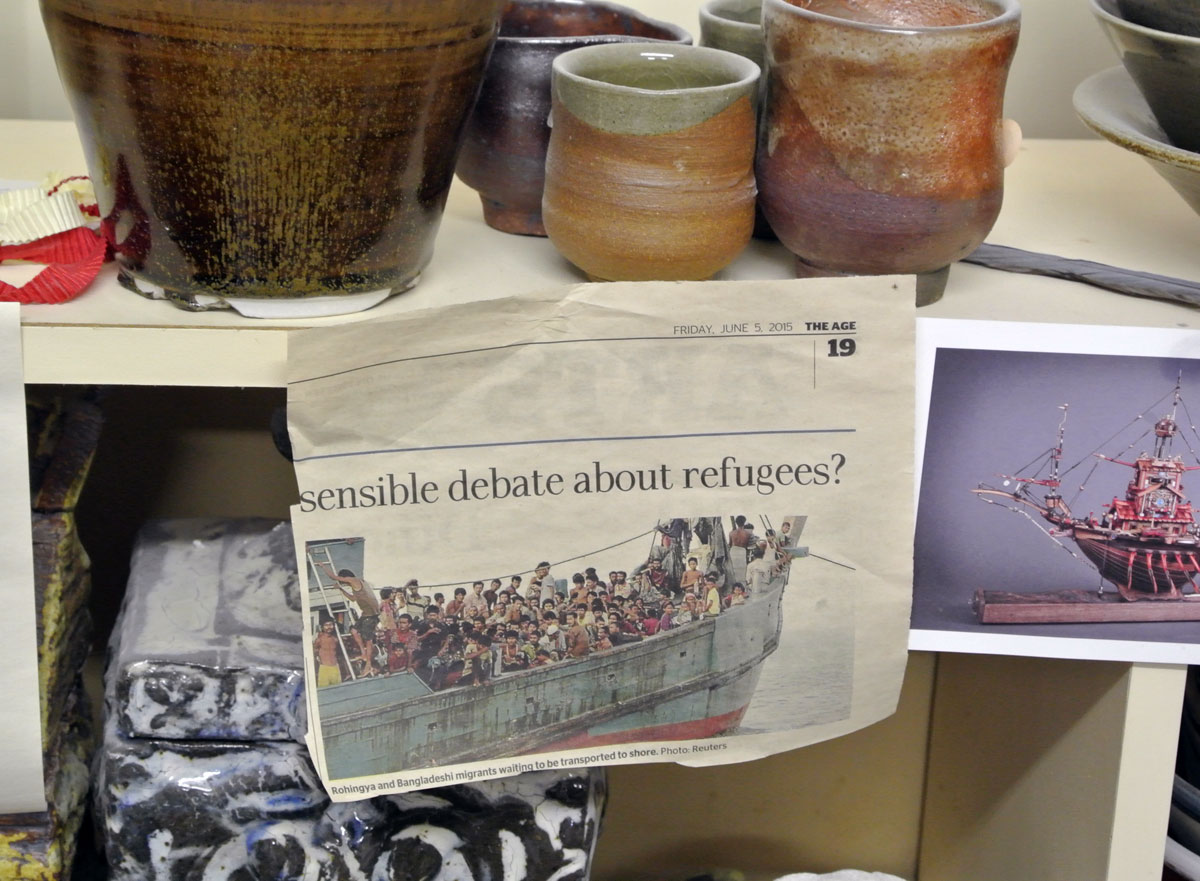
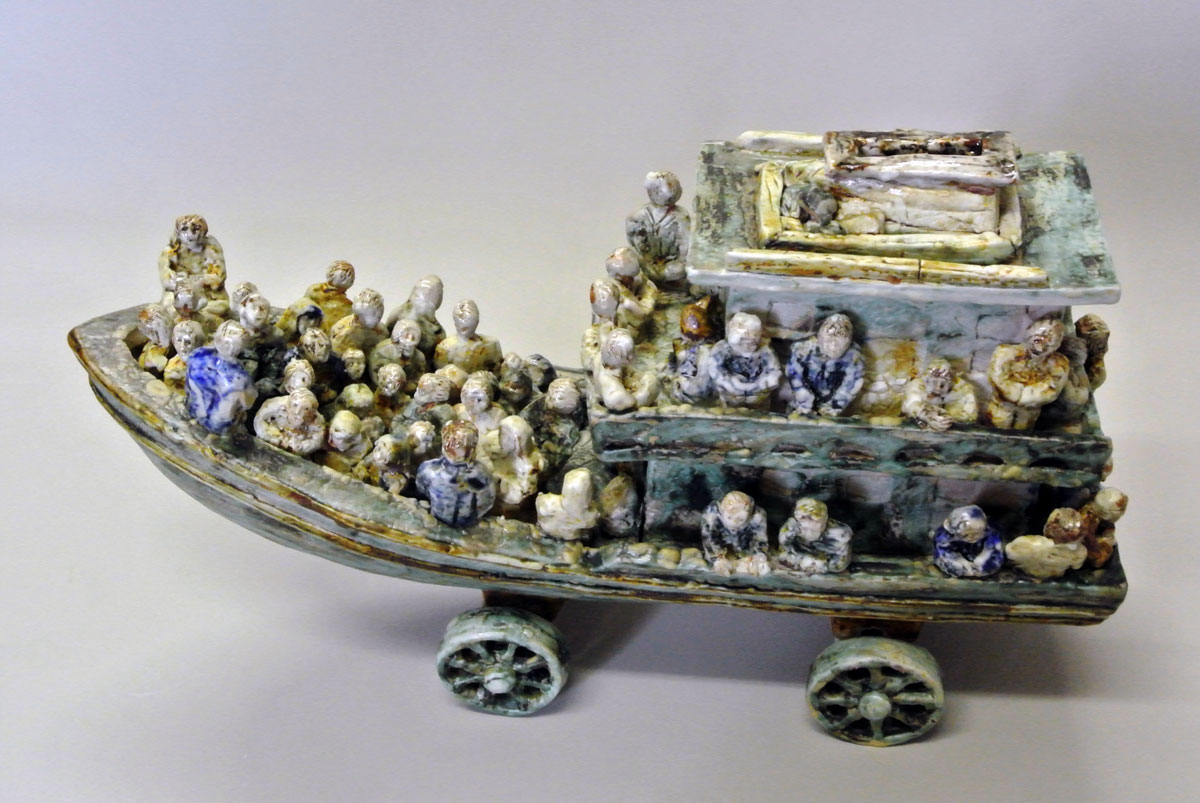
By John O’Loughlin
It never occurred to me that I might be revolutionary, in my thoughts or actions. In fact, looking back on my youth, I consider myself as being rather naïve, an observer, reporter, reviewer.
I was the young altar boy who readily accepted the suggestion that he might become a priest. Who, at the age of 12 years, went off from a small country town in South Australia to a boarding school in Adelaide to learn Latin as preparation for seminary studies. There was never a question about belief in the theological principals of the Catholic faith—that was a given. After eight years, however, I doubted my ability to fulfill the vocation of the priesthood, a lonely, celibate life, and decided to leave the seminary a year or so before ordination would have taken place.
I moved to Melbourne in the state of Victoria, found employment, got married, and lived as an active Catholic parishioner in different towns according to work needs, always confident in my faith. I even acted as a lay minister when the number of ordained priests declined over the years.
In 1980, I began the practice of pottery, a practice that has developed ever since. I quickly fell in love with clay, as one does, and continued on with this art form. My last work posting (with the Federal Department of Employment) was to Ballarat, a historical gold town, where the mining highlighted the good clays available, so many potters worked there. I advanced my skills on a part-time study basis until I was able to retire at the age of 56 and attend the University Arts Academy full time as a late-life student of visual arts specialising in ceramics. By the time I had finished an honors year, then gone on to a Master of Arts and a year as an artist in residence, my years of art training matched my time in the seminary.
Through the study of writers and artists, I learned about the possibility of transforming a one-dimensional idea into its three-dimensional expression. This was revelation to me. Writers such as Sister Rosemary Crumlin in her exhibition guidebook “Beyond Belief-Art and the Religious Imagination” and Simon Shama in “Landscape and Memory” echo my own attitude to the creation of art. Historical research involves digging down from the familiar through many layers, reaching new understandings, and then coming back to our own reality and reframing our perceptions. Our religious art-making is very individual and uses personal symbols that are unique to the individual artists’ experience of life. As artists, we seek to question rather than to present definite ideas. We use familiar iconographies and juxtapose symbols that are often incongruous and anomalous, but which become very expressive.
Artists like Adrian Saxe helped me see a way to express ideas in clay, to transform a particular idea into three-dimensional symbolism. For example, the gourd form became a symbol for the human body (both a woman and a man). A new and exciting experience was the discovery of ‘dialogue’ with my artworks, a process that occurred, or was revealed, quite suddenly, during the production of work in my Masters studies. The back-and-forth ‘discussion’ with a new piece of artwork was both real and amazing, and has become natural and continuous as part of my art-making to this day.
During the making process, the dialogue is ongoing, helping one to evaluate form, indicating when the piece needs adding to or subtracting from, a little line of clay to finish the appearance of a lid or the like. A finished piece like the “Closed Reliquary with Three Crosses”, the first of the closed or un-lidded vessels that I made, was observed with satisfaction, even excitement, as it sat on the studio bench. The dialogue was in the form of the realisation that this vessel does represent something mysterious, perhaps even eternal, in that one could never know what might (fancifully) be inside the reliquary. The patina of the piece communicates a sense of age, of the “digging down” through history, of being there when the saint’s bones were laid in the vessel.
The real revolution, though, was the dramatic shift in my religious understanding through this time of study. My wife and I had stopped attending Mass as we felt we were not really engaging with the meaning of the ritual any longer. I was experiencing growing anger at, and disillusionment with, the church, including the clergy sexual-abuse issues, very prominent in Ballarat, both in previous years and at this time.
I have many friends from my student days who are exemplary priests who have adopted celibacy as a way of life. The pedophile priest is a criminal affront to the efforts of these men, and has altered their lives and relationships with their young and mature parishioners. When our own parish priest left suddenly, I collected money for him around the parish and passed it on to help him in his “recovery”, never realising that he was, as it later turned out, a pedophile priest. For my wife and I there was an escalation in our anger and disillusionment that led us to cease practicing our religion.
My outlook on art was transforming as well. An important beginning point was to solve the problem of how to produce surface treatments on the clay that exuded the baroque style or a feel for over-decoration that was evident in most reliquary forms that I have seen. The solution was to visit churches and cemeteries and to mould with clay the marble carvings on headstones and in church art, and to take impressions from wrought iron in graveyards. I amassed a great array of moulds and have used them repeatedly in the works.
I began to delve into the question of the fine line between faith and superstition through a study of the belief in miracles. I had always believed in the possibility of supernatural intervention in worldly affairs and in the veracity of the stories of miracles performed by God directly, or through the intervention of a saint, or indeed daily through the priest when, during the Catholic Mass, he ‘transubstantiates’ the bread and wine into the body and blood of Christ. I know that millions before have called this pure superstition, that wars have been fought over the belief, but for me it was the Catholic faith which I believed. Until my research and my thinking brought about a quite sudden change in belief.
I realise now that this had been brewing for some time, the questioning of the reality versus the statements of doctrine that I heard and knew. I reflected on the enormous faith called for by the church in expecting its faithful to accept that a miracle occurs at every Mass. Throughout the world, people must believe that when the priest says “..this is my body…this is my blood” the bread and wine become the body and blood of Christ. As Catholics we accepted this as part and parcel of “our faith”. Perhaps it doesn’t bear too much thinking about.
The questioning of the veracity of belief in miracles raises so many other issues. Life and death issues. For the Catholic, saints exist in an after-life and occasionally ‘visit’ a human through a vision. The Nicene Creed is recited by the congregation at every Catholic Mass, saying “I believe in … the resurrection of the dead and life everlasting.” My making of reliquaries, chests for the storage or display of remnants of saints’ bodies or clothing, became the medium for expression in my ‘Church and Faith’ series. I gained much inspiration for this from my visits to Italy, where I visited family and travelled. There were so many types of elaborately crafted and decorated vessels displayed in the churches and museums that I visited, often used in processions on feast days. I admired the beauty of the reliquaries, but the macabre and superstitious nature of this form of celebration and belief chewed away at my own beliefs like a dissolving solution.
I was not becoming an evangelising atheist but a quiet revolutionary, which is why I titled my thesis ‘Vessels for Miracles: a tangible expression of an unwillingness to disallow belief.’ I was, however, at last, allowing myself to disbelieve.
I read a book by an Anglican bishop in which he said that he no longer believed in the resurrection of Jesus, the fundamental belief of Christianity, but that change of heart hasn’t altered his faith or his following of Jesus. When I read this I was shocked. Was it possible to deny the resurrection and still be a good person? The framework of my study and my beliefs changed from that time. On reflection this ‘dialogue with the artwork’ was a very intimate experience of the mind, a spiritual connection, like my love for my wife. I realise now that I had not felt this same connection in my relationship with God or the saints. My beliefs were my faith, academic connections rather than real and personal ones.
Now I see religion as a construct of man, an artifice to help mankind understand and manage the mysteries of life and death. My connection with my art, and with art in general, has taken the place in my head that at one time was occupied by my faith. The activities of a life of Catholicism are many and varied and there is a gap left when one opts out of that way of life, especially the dimension of community. I fill that gap with continuing friendships and an active life around family and, of course, my art.
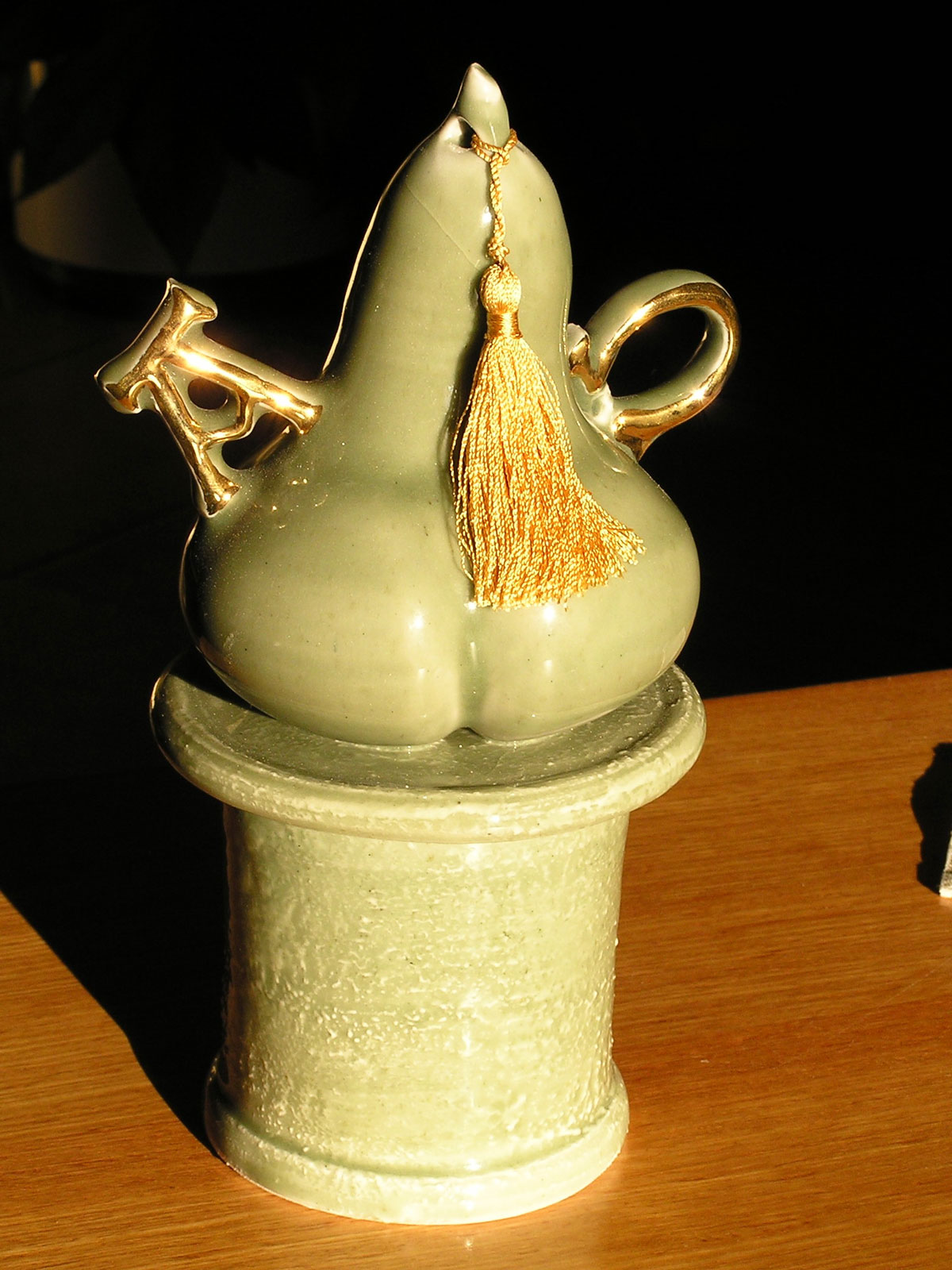
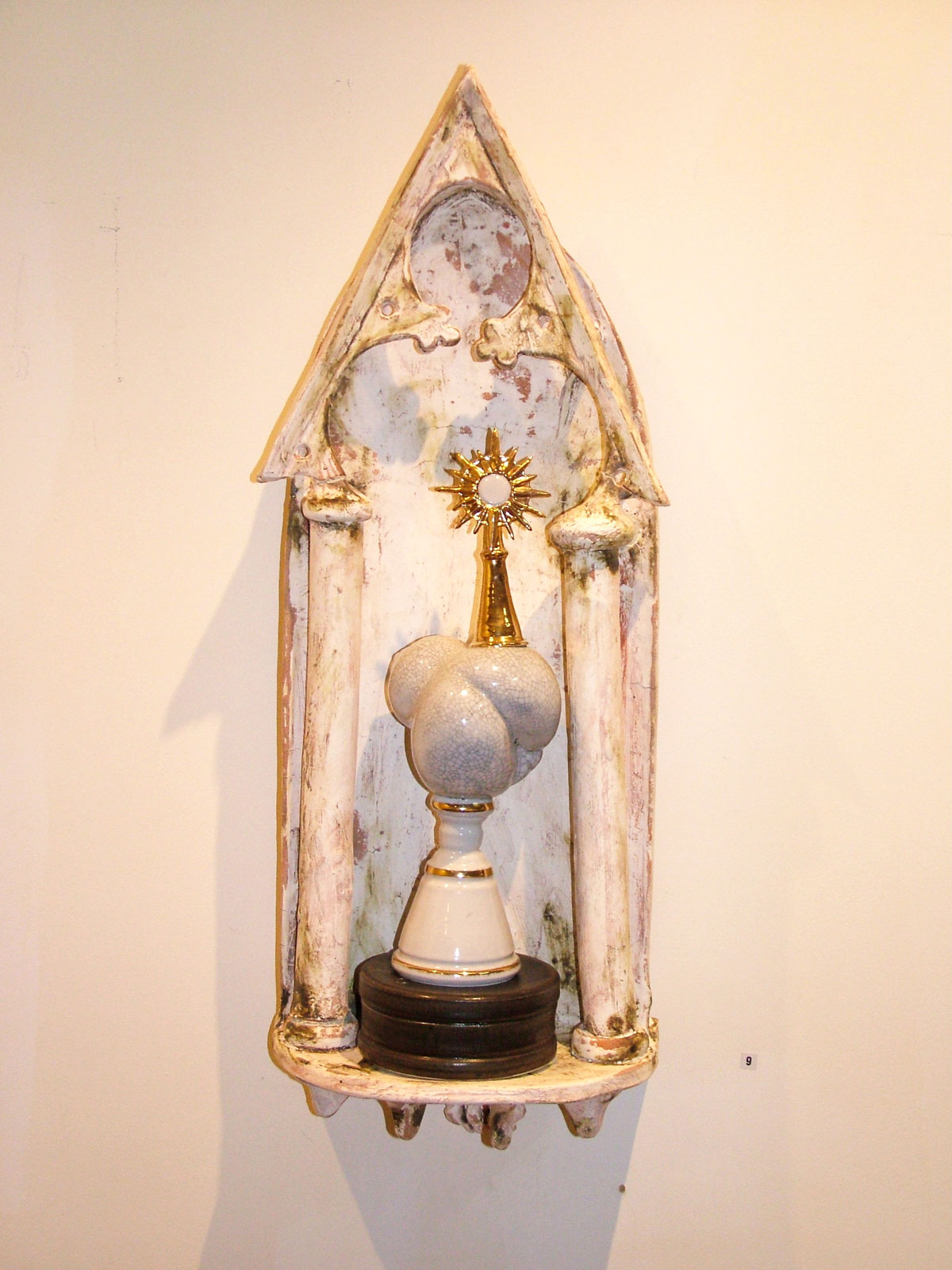
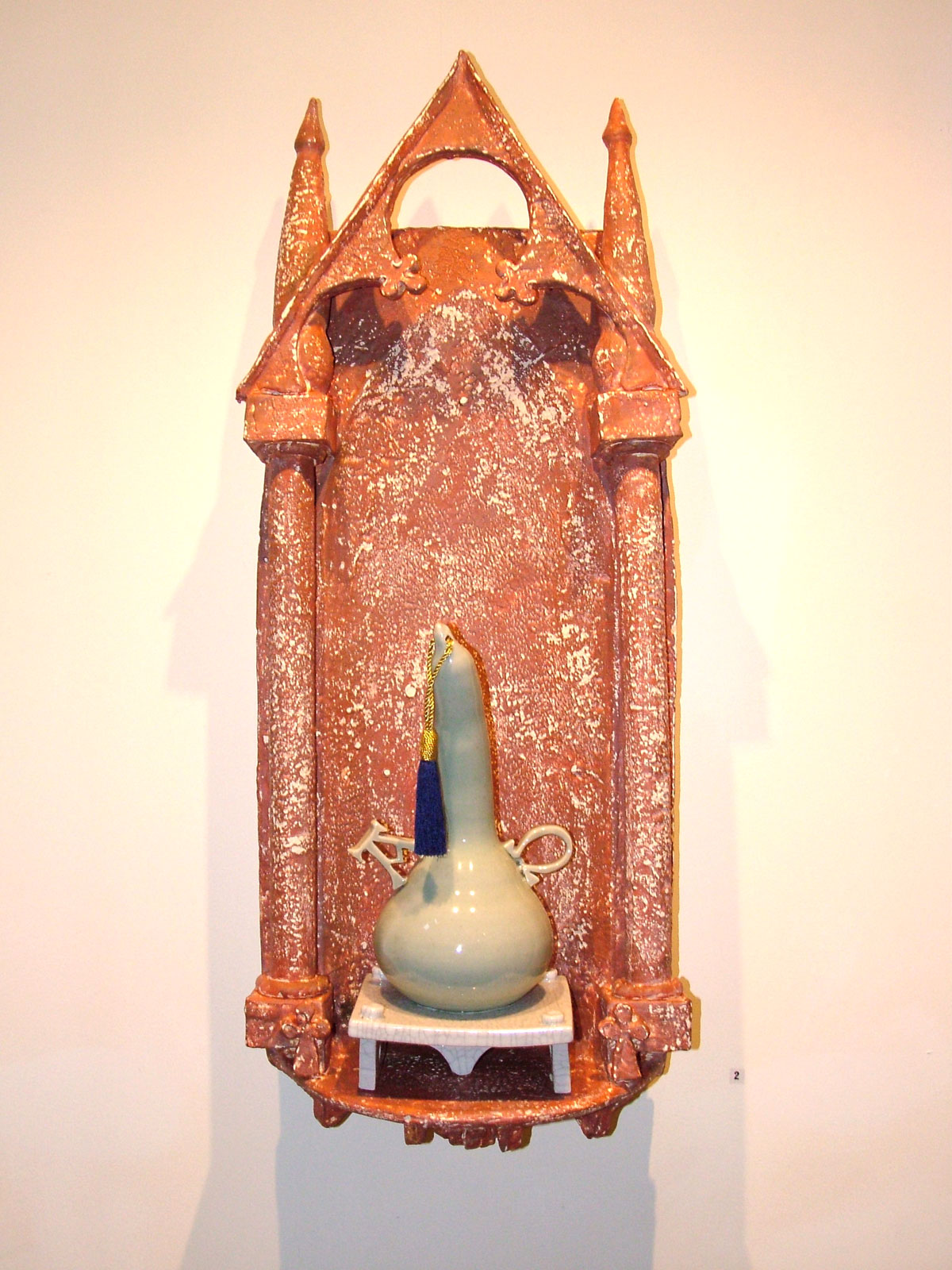
This short movie on the art of John O’Loughlin was made in collaboration with the American musician Will Bangs.

Composer. Musician. Teacher. Writer. Husband. One of Will’s passions is composing soundtracks for film, commercials and everyday life. Fans of Sigur Ros, Explosions in the Sky, The Album Leaf, John Fahey and other instrumental bands will find a similar aesthetic through layered guitars, piano, glitchy electronics and slow, melancholic melodies. He also draws on other instrumentation with a host of fellow musicians and friends who play everything from cello to drums. When he’s not composing his own music, he helps license other people’s music at Music Box Licensing.

